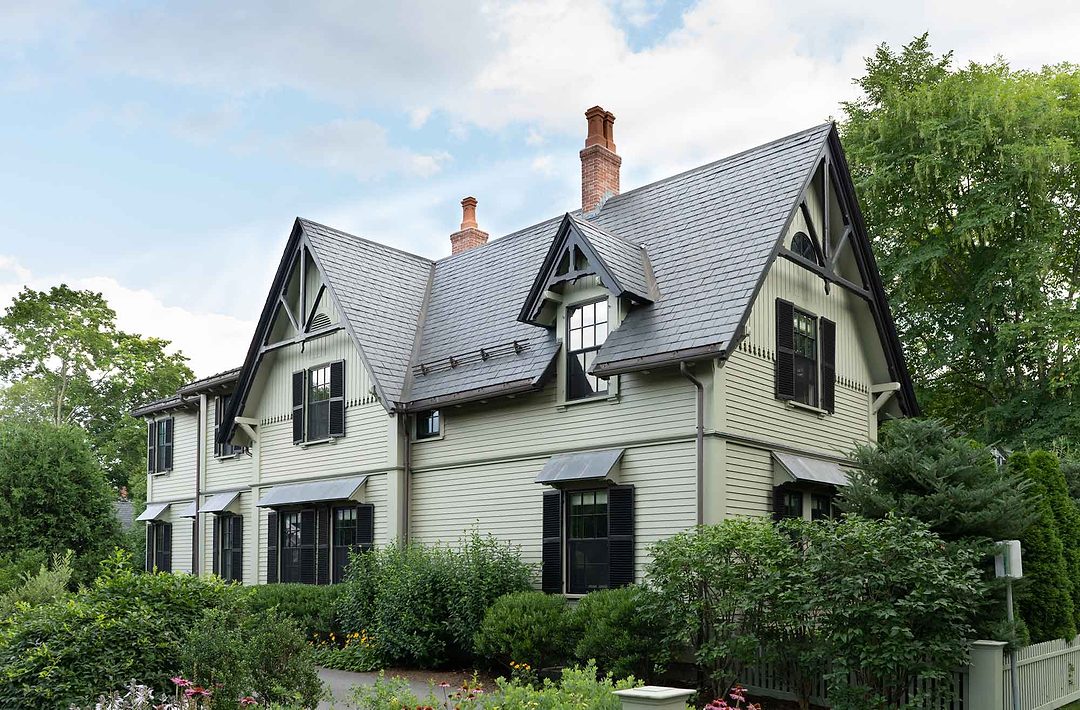Concord Center’s beautiful homes are a pageant of architectural history, and among the Federal-era, Colonial-era, and Victorian homes stands this delightful Stick Style home. A rare style in Concord, the home was built in the 1860s for William Munroe Jr.’s gardener. The Stick Style is notable for its functional-appearing but decorative woodwork, such as the diagonal trusses that span the roof’s gable ends.1 It also celebrated the use of wood as a building material in residential construction. New England homes are traditionally made of wood, but older styles often emulated the look of masonry, such as in the Greek Revival style. Soon the Stick Style with its fanciful fretwork would morph into the more commonly seen Queen Anne style of later Victorian architecture.
After the Munroe gardener’s death, the home became a rental property and was eventually purchased by Eric Parkman Smith, an esteemed Concord resident who was a partner in West Concord’s Damon Mill. Remarkably, this home was continuously rented from 1873 until 2016 when its present owners moved in!
The home caught the eye of the current owners when they spied its gable behind overgrown shrubbery and a For Sale sign in 2007. “We weren’t really looking to move,” explains the present owner, “but we saw the house and the walkable neighborhood, and it was just what we were envisioning for our upcoming empty-nester lifestyle.” They made an offer, which was accepted, and continued to rent the home for several years while formulating restoration plans.
 ©Pierre Chiha Photographers
©Pierre Chiha PhotographersThe original features throughout the home were largely intact. One challenge was the discovery of mortared bricks between the exterior clapboards and the original interior plaster, an insulation idea from the mid-1800s that wasn’t very effective. They decided to redo the plaster and bring the R-value up to current codes with new insulation. The couple also selected new slate to replace the existing slate roof, a decision that was expensive but felt important to keep the home’s charm and integrity. The gable trusses and window overhangs are all original. The chimneys were rebuilt with historically accurate chimney pots. (The cracked original chimney pots are carefully stored in the newly built garage.)
The home had a late-19th century utilitarian addition built at the back. This was removed, and a new addition was designed to provide a family room and upstairs primary suite. A second-floor balcony matches the star latticework found at the front of the house. “Our architect, Frank Oliva of Yarmouth, Maine, did a wonderful job of integrating the new wing with the original part of the house,” the owners concur.
Professional landscaping by Kyle Zick opened up the yard to the street so that this historical Stick Style house once again takes its place in the neighborhood vista.


